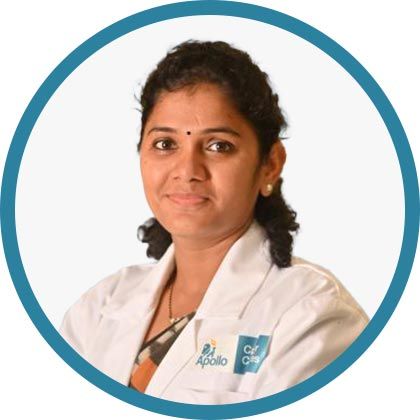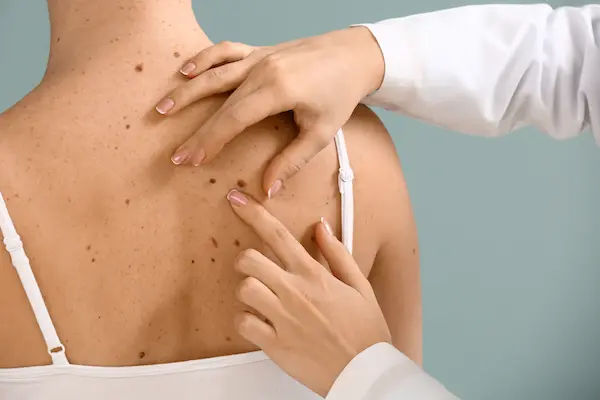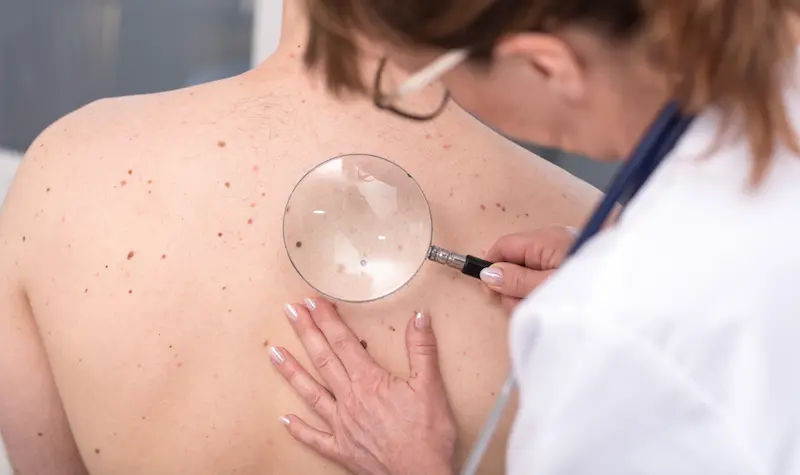Your Ultimate Guide to Skin Cancer Prevention and Healthy Skin
Know about skin cancer, know what it is, the main types, sun protection strategy, lifestyle options, early detection, prevention, treatment and more.

Written by Dr. J T Hema Pratima
Reviewed by Dr. Dhankecha Mayank Dineshbhai MBBS
Last updated on 6th Oct, 2025

Introduction
Skin cancer holds the sobering title of being the most common cancer worldwide, but here’s the empowering truth: it is also one of the most preventable. Every sunburn, every tan, adds up, contributing to DNA damage in your skin cells that can lead to cancer years later. This comprehensive guide is designed to be your go-to resource for effective skin cancer prevention. This article will provide you with actionable tips, debunk common myths, and emphasise that prevention is a continuous practice, not just a summer concern. By understanding the risks and adopting these protective habits, you can significantly reduce your chances of developing skin cancer and maintain healthier, more resilient skin.
Understanding the Enemy: What is Skin Cancer?
Before diving into prevention, it's helpful to understand what we're preventing. Skin cancer occurs when unrepaired DNA damage to skin cells triggers mutations, or genetic defects, that lead the skin cells to multiply rapidly and form malignant tumours. The primary cause of this DNA damage is ultraviolet (UV) radiation from the sun and artificial sources like tanning beds.
Health topic carousel:
Doctor's speciality: Oncologist
Text: Consult an Oncologist for Personalised Advice
The Main Types: Basal Cell, Squamous Cell, and Melanoma
There are several types of skin cancer, but the three most common are:
Basal Cell Carcinoma (BCC): The most frequent form of skin cancer, BCC arises in the basal cells of the epidermis. It often looks like a pearly bump or a pinkish patch of skin and tends to grow slowly. It rarely spreads to other parts of the body but can cause significant local damage if not treated.
Squamous Cell Carcinoma (SCC): The second most common type, SCC develops in the squamous cells. It may appear as a red, firm nodule or a flat lesion with a scaly, crusted surface. It's more likely than BCC to grow into deeper layers of the skin and spread.
Melanoma: Although less common, melanoma is the most dangerous form of skin cancer because of its ability to spread rapidly to other organs if not caught early. It develops in the melanocytes, the cells that produce pigment. Understanding the ABCDEs of melanoma is crucial for early detection.
How UV Radiation Damages Your Skin Cells
UV radiation is invisible energy from the sun, categorised into UVA and UVB rays. UVB rays are primarily responsible for sunburns and directly damage DNA. UVA rays penetrate deeper into the skin, causing premature ageing (wrinkles, sunspots) and indirect DNA damage. Both types contribute to skin cancer risk. Think of it as UVB for "burning" and UVA for "ageing," but both are culprits in "carcinogenesis" (cancer formation).
Your Daily Sun Protection Strategy: Beyond Just Sunscreen
A robust prevention plan is multi-layered. Sunscreen is vital, but it should be your last line of defense, not your only one.
Decoding Sunscreen: SPF, Broad-Spectrum, and Water Resistance
Choosing the right sunscreen can be confusing. Here’s a simple breakdown:
SPF (Sun Protection Factor): This number primarily indicates protection against UVB rays. SPF 30 blocks about 97% of UVB rays, while SPF 50 blocks about 98%. No sunscreen blocks 100%. Dermatologists recommend using a broad-spectrum sunscreen with an SPF of 30 or higher for daily use.
Broad-Spectrum: This is non-negotiable. It means the sunscreen protects you from both UVA and UVB rays, providing balanced protection.
Water Resistance: No sunscreen is "waterproof." Labels now state "water-resistant" for either 40 or 80 minutes. Reapplication after swimming or heavy sweating is essential.
The Correct Way to Apply Sunscreen for Maximum Protection
Most people use too little. To ensure you're getting the stated SPF, follow these steps for effective skin cancer prevention:
1. Amount: Use about one ounce (a shot glass full) to cover your entire body. For your face and neck alone, use about a teaspoon.
2. Timing: Apply sunscreen 15 minutes before going outdoors to allow it to bind to your skin.
3. Coverage: Don’t forget often-missed spots: ears, back of the neck, tops of feet, and scalp (if hair is thin).
4. Reapplication: Reapply every two hours, and immediately after swimming or towelling off.
Sun-Protective Clothing: Your First Line of Defense
Clothing is a simple and highly effective barrier. A long-sleeved shirt and pants provide better protection than any sunscreen. Look for clothes with an Ultraviolet Protection Factor (UPF) rating. A UPF of 50, for example, allows only 1/50th of the sun's UV radiation to reach your skin. A wide-brimmed hat (3-inch brim or more) protects your face, ears, and neck far better than a baseball cap.
Seeking Shade and Timing Your Outdoor Activities
The sun's rays are strongest between 10 a.m. and 4 p.m. Whenever possible, plan outdoor activities for earlier or later in the day. When you are in the sun, seek shade under a tree, umbrella, or other shelter. This is a key sun protection tip for children and adults alike. Use the shadow rule: if your shadow is shorter than you are, the sun's rays are at their strongest.
Lifestyle Choices That Impact Your Skin Cancer Risk
The lifestyle choices include:
The Truth About Tanning Beds: A Direct Risk Factor
The World Health Organisation has classified tanning beds as a Group 1 carcinogen, the same category as tobacco and asbestos. Using a tanning bed before the age of 35 increases your risk of melanoma by 75%. There is no such thing as a "safe" or "base" tan from a bed; it is simply concentrated, artificial UV radiation causing direct DNA damage. Avoiding them is one of the most straightforward ways to prevent skin cancer.
The Role of Nutrition and Antioxidants in Skin Health
While no food can replace sun protection, a diet rich in antioxidants can help your body fight off cellular damage. Foods like colourful fruits and vegetables (berries, tomatoes, leafy greens), green tea, and dark chocolate contain compounds that may provide a small layer of internal defense against UV-induced free radicals. Think of it as supporting your skin's health from the inside out.
Early Detection is Key: How to Monitor Your Skin
Prevention reduces risk, but early detection saves lives. When caught early, the five-year survival rate for melanoma is over 99%.
Performing a Monthly Self-Examination of Your Skin
Get familiar with your skin. Once a month, in a well-lit room with a full-length mirror, check your entire body, including your scalp, between your toes, and the soles of your feet. Use a hand mirror for hard-to-see areas. The goal is to notice any new growths or changes to existing moles.
The ABCDEs of Melanoma: What to Look For
This easy-to-remember guide helps you identify warning signs of melanoma:
A - Asymmetry: One half of the mole doesn't match the other.
B - Border: The edges are irregular, ragged, or blurred.
C - Colour: The colour is not uniform and may include shades of brown, black, red, white, or blue.
D - Diameter: The spot is larger than 6mm across (about the size of a pencil eraser), although melanomas can be smaller.
E - Evolving: The mole is changing in size, shape, or colour.
The Importance of Professional Skin Checks
Everyone should have a professional skin exam. If you have a personal or family history of skin cancer or have many moles, you may need them more frequently. If you notice any changes, itching, or bleeding mole, consult a dermatologist online with Apollo24|7 for an initial evaluation. They can advise if an in-person visit is necessary.
Special Considerations and Common Misconceptions
The special considerations and misconceptions include:
Skin Cancer Prevention on Cloudy Days and in Winter
Up to 80% of UV rays can penetrate clouds. Snow, sand, and water can reflect and intensify UV rays, increasing your exposure. Sun protection is a year-round commitment, not just for sunny beach days.
Protecting Vulnerable Groups: Infants, Children, and High-Risk Individuals
A child's skin is more sensitive and vulnerable to sun damage. Sunburns in childhood significantly increase the risk of developing skin cancer later in life. Keep infants under six months out of direct sunlight entirely, and use protective clothing and hats. For older children, make sunscreen and protective gear a non-negotiable habit. Individuals with fair skin, light-colored eyes, red or blond hair, or a history of sunburns are at higher risk and need to be especially vigilant.
Conclusion
Skin cancer prevention is an ongoing practice of mindful choices that collectively build a powerful shield for your health. It's about integrating sun-safe behaviours into your daily routine—choosing the right clothing, applying sunscreen as habitually as brushing your teeth, and being smart about sun exposure. By understanding the risks, adopting a multi-layered protection strategy, and committing to regular self-examinations and professional check-ups, you are taking proactive control of your well-being. Remember, the goal is not to avoid the sun entirely, but to enjoy it responsibly. The steps you take today are an investment in your health for decades to come. Your skin is your body's largest organ; protecting it is one of the most important things you can do for yourself. If you have any concerns about a spot or mole, don't hesitate to seek professional advice.
Health topic carousel:
Doctor's speciality: Oncologist
Text: Consult an Oncologist for Personalised Advice
FAQs
1. Can I get enough Vitamin D if I'm always protecting myself from the sun?
Yes. While the sun triggers Vitamin D production, the amount needed is minimal and can often be achieved through incidental exposure (like walking to your car). Due to the risk of skin cancer, it's safer to get Vitamin D through diet (fatty fish, fortified foods) or supplements. Apollo24|7 offers convenient home collection for tests like vitamin D if you're concerned about your levels.
2. Is makeup with SPF enough for daily sun protection?
It's a good start, but likely not sufficient. Most people do not apply enough makeup to achieve the stated SPF. It's best to use a dedicated facial sunscreen under your makeup for adequate protection.
3. What is the difference between chemical and mineral sunscreens?
Mineral sunscreens (containing zinc oxide or titanium dioxide) sit on top of the skin and physically block UV rays. Chemical sunscreens absorb into the skin and then absorb UV rays, converting them into heat. Both are effective; mineral formulas are often better for sensitive skin.
4. How can I tell if a mole is dangerous?
Use the ABCDE rule as a guide. Any mole that is new, changing, itching, bleeding, or doesn't heal should be evaluated by a doctor. If you notice such a change, consult a dermatologist online with Apollo24|7 for guidance.
5. Does a higher SPF (like 100) provide much better protection?
Not significantly. SPF 30 blocks about 97% of UVB rays, SPF 50 blocks 98%, and SPF 100 blocks 99%. No sunscreen blocks 100%. The key is proper and generous application of a broad-spectrum SPF 30 or higher, rather than relying on a very high number.
Consult Top oncologist

Dr. Sanchayan Mandal
Medical Oncologist
17 Years • MBBS, DrNB( MEDICAL ONCOLOGY), DNB (RADIOTHERAPY),ECMO. PDCR. ASCO
Kolkata
MCR SUPER SPECIALITY POLY CLINIC & PATHOLOGY, Kolkata

Dr. Rupam Manna
Radiation Specialist Oncologist
4 Years • MBBS MD(RADIO THERAPY)
Barasat
Diab-Eat-Ease, Barasat

Dr Mukti Mukherjee
Radiation Specialist Oncologist
12 Years • MBBS (Hons.), MD (Radiation Oncology), PDCR, CCEPC (Palliative Care) Consultant Oncologist
Kolkata
Apollo Multispeciality Hospitals , Kolkata, Kolkata

Dr. Jayasree Kuna
Radiation Specialist Oncologist
4 Years • MD
Chinagadila
Apollo Hospitals Health City Unit, Chinagadila

Dr. Rajendran B
Radiation Specialist Oncologist
27 Years • MBBS, MD, DNB, DMRT
Chennai
Apollo Hospitals Cancer Centre Nandanam, Chennai
Consult Top Specialists

Dr. Sanchayan Mandal
Medical Oncologist
17 Years • MBBS, DrNB( MEDICAL ONCOLOGY), DNB (RADIOTHERAPY),ECMO. PDCR. ASCO
Kolkata
MCR SUPER SPECIALITY POLY CLINIC & PATHOLOGY, Kolkata

Dr. Rupam Manna
Radiation Specialist Oncologist
4 Years • MBBS MD(RADIO THERAPY)
Barasat
Diab-Eat-Ease, Barasat

Dr Mukti Mukherjee
Radiation Specialist Oncologist
12 Years • MBBS (Hons.), MD (Radiation Oncology), PDCR, CCEPC (Palliative Care) Consultant Oncologist
Kolkata
Apollo Multispeciality Hospitals , Kolkata, Kolkata

Dr. Jayasree Kuna
Radiation Specialist Oncologist
4 Years • MD
Chinagadila
Apollo Hospitals Health City Unit, Chinagadila

Dr. Rajendran B
Radiation Specialist Oncologist
27 Years • MBBS, MD, DNB, DMRT
Chennai
Apollo Hospitals Cancer Centre Nandanam, Chennai


